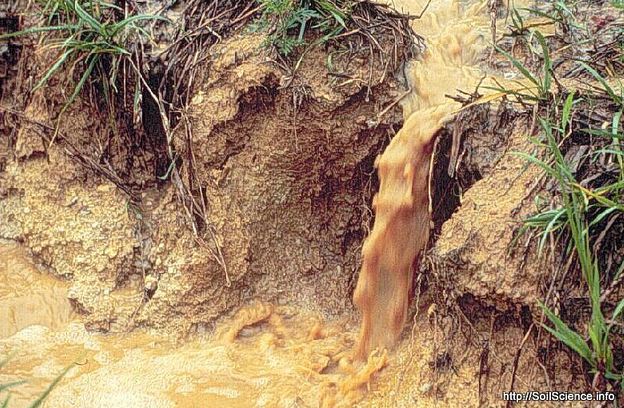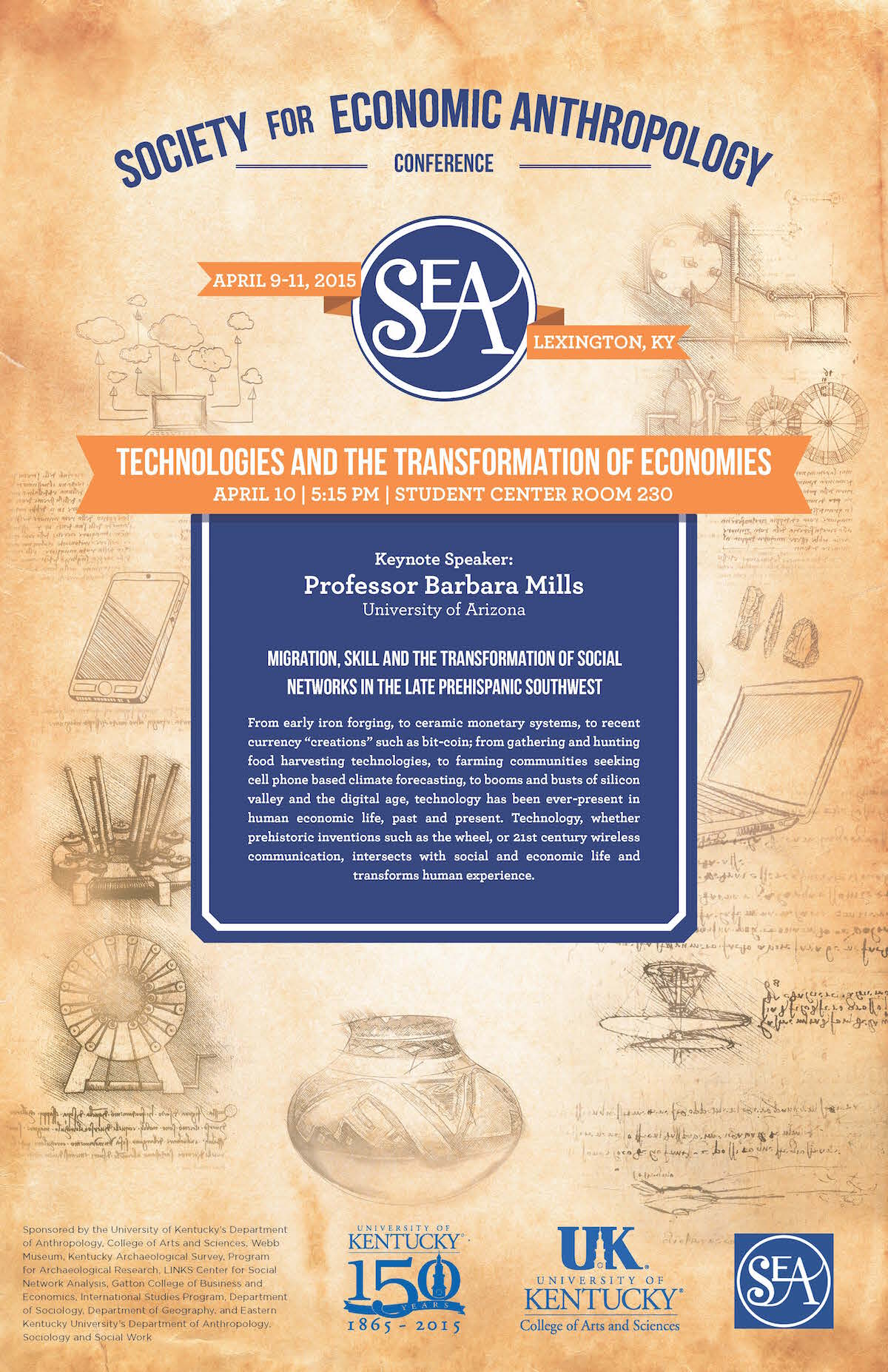Sue Roberts Named A&S Associate Dean
Mark Kornbluh, dean of the University of Kentucky College of Arts and Sciences, announced today that Sue Roberts, professor of geography, has accepted the positions of associate dean for international affairs
Mark Kornbluh, dean of the University of Kentucky College of Arts and Sciences, announced today that Sue Roberts, professor of geography, has accepted the positions of associate dean for international affairs
This is a continuation of a previous post, and this one will be even less intelligible unless you read that one first.
So, even though we rarely use the term, geoscientists have our metanarratives. Metanarrative is something of a perjorative for postmodern (pomo) critical social theorists, but just because because a metanarrative doesn’t really explain everything, even within its domain, doesn’t make it wrong, useless, or even hubris-y. As long we don’t make claims or insinuations, or have expectations, of a “theory of everything,” overarching theories or explanatory frameworks can be evaluated on their own merits or lack thereof—that is, whether a construct can be considered a metanarrative or not is independent of its utility and value.

At my job I am housed in a building occupied mostly by social science and humanities scholars, many of whom are postmodern, post-structuralist, “critical” social theory oriented. The “critical” is in quotes not to cast aspersions, but because these folks use the term somewhat differently than do scientists, for whom all well-conceived legitimate work is critical in the sense of skepticism, testability, and the potential for falsification. Anyway, my office location ensures that I am exposed to a good deal of the concepts and jargon of that community.
One of those is metanarrative. According to the Sociology Index web site:
A lot of us in the geoscience business are concerned these days with interpreting ongoing and past, and predicting future, responses of landforms, soils, and ecosystems to climate change. As one of my interests is rivers, I have noted over the years that in a lot of the literature on paleohydrology the major changes, such as major influxes of sediment, seem to occur at climate transitions, rather than after climate changes or shifts have had a chance to settle in and exert their impacts for awhile.
A related issue is the relationship between precipitation, temperature, runoff, erosion, and vegetation. As climate changes both temperature and precipitation regimes change. And as every physical geography student knows, moisture availability is not just about precipitation, but the balance between precipitation and evapotranspiration (ET). So, if both temperature and precipitation are increasing (as is the case on average on much of the planet now), whether available moisture increases or decreases depends on the relative increases of precipitation and ET.

Soil erosion on cropland.
Justice has been a reference point for radical and critical geographers for more than 40 years. Geographers’ engagements with issues of justice, however, have always been defined by wariness toward political philosophies of justice. These are variously considered too liberal, too distributive in their orientation, or too universalizing. The wariness, in short, indicates the parameters that define the prevalent spatial imaginary of radical and critical human geography: self-consciously oppositional, concerned with the production of structural relations, sensitive to context and difference. Barnett explore two overlapping strands of contemporary political philosophy and political theory that have recently developed arguments for ‘the priority of injustice’ in the elaboration of democratic theory.
Anna Secor, professor of geography, social theory, and gender and women’s studies at the University of Kentucky College of Arts and Sciences, has been named the university’s first Hajja Razia Sharif Sheikh Islamic Studies Professor.
Clive Barnett is a professor of geography and social theory at the University of Exeter. He is an urban-political geographer whose main interests are in democracy, public life, and urbanization.
You can see his profile at http://geography.exeter.ac.uk/staff/index.php?web_id=Clive_Barnett
His work investigates the intersections between democracy, public life, and urbanization. His current research includes work conceptualising the relationships between democracy and urbanization; work on the contemporary ‘urbanization of responsibility’; and research on the geographies of contentious public action.
He is the Editor for the Routledge Research in Place, Space and Politics Series.Here is a link to details of how to submit a proposal to the Series.
He blogs about some of his research and teaching interests at Pop Theory. Downloads of some of his research and teaching publications can be found at Academic.edu.

Dr. Maria Fannin graduated with her BA degree from UK Geography and is now Senior Lecturer in the School of Geographical Sciences at the University of Bristol (http://www.bristol.ac.uk/geography/people/maria-fannin/).
In preparation for the seminar, PLEASE READ the article at this DropBox link (https://www.dropbox.com/s/njwvpqhyhfzg3q4/Fannin_Kent_2015.pdf?dl=0)
In the early 1990s, over 14,000 pregnant women in southwest England were recruited to a longitudinal birth cohort study to study the relationship between child health and the environment. This study, known to the wider public as ‘Children of the 90s,’ involved the collection of health and lifestyle data as well as biological materials from mothers and their children, including whole placentas collected at birth. This seminar will explore how the placentas collected as part of this study were transformed into scientific objects, drawing on interviews with mothers, scientists, and other curators of the tissue collection. We suggest that the value attributed to the placenta as a ‘connective tissue’ and an archive of the child’s earliest ‘environment’ tells an important story about the social and cultural imaginaries of biobanking. We also argue for greater attentiveness to the geographies of tissue collections and to the profoundly biopolitical work of these collections in the making of a study population.
Rob Roth
University of Wisconsin-Madison
Maps have gone viral. They are in our cars, on our phones, and in our public spaces. Further, maps and mapping technology are used to address many of our planet’s most pressing problems. Arguably, maps have never been so important, and, importantly, the forms in which we encounter them are evolving. Maps increasingly are interactive, delivered online or through mobile applications. As a result, the cartographer increasingly must fill the dual roles of graphic designer as well as interaction designer; they must understand how to visually encode geographic information based on principles of perception, cognition, and semiotics as well as how to digitally code a useful and usable interface for manipulating the resulting maps.
In this talk, I will approach the emerging profession of UI/UX designer (User Interaction / User Experience) and its implications on cartography as both discipline and practice. Specifically, I will describe our experience creating a map-based UI/UX design course in the Department of Geography at UW-Madison. The story unfolds in three acts: (1) UI/UX theory, synthesized from the fields of human-computer interaction, information visualization, and usability engineering, and appended by my own empirical research on interactive map design; (2) UI/UX technology, focused on a critical comparison of client-side web mapping technologies to core interaction concepts, and (3) teaching UI/UX, drawn from lessons learned from the map-based UI/UX design course at UW-Madison. I will conclude with an outlook of UI/UX design in cartography, posing challenges and opportunities to stimulate discussion following the talk.